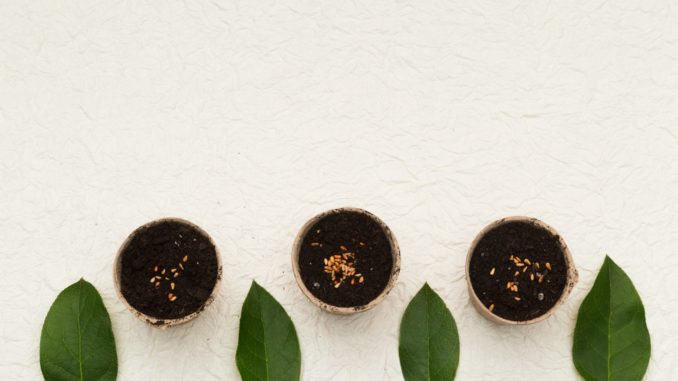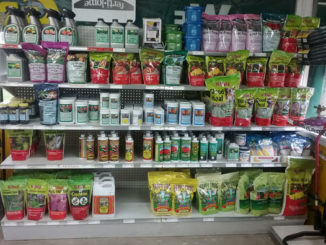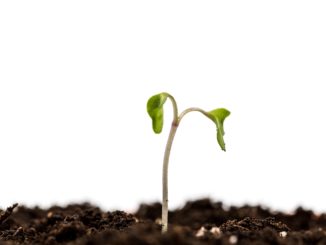
By Kathleen Miller
Gaia’s Farm and Gardens
Sustainable living, gardening and farming is based on an understanding of ecosystems, the study of relationships between organisms and their environment. It has been defined as an integrated system of plant and animal production practices that will last over time. Having a harmonious relationship with Gaia (Mother Earth) provides food for people, enhances the natural environment upon which the community depends, makes efficient use of resources and integrates natural cycles that sustain economic viability as well as enhances the quality of life for the community as a whole.
Does Size Matter?
Apartment living, cluster zoned developments and the decrease in available farmland are creating a new kind of farmer, the urban farmer. Using simple space-saving techniques, city dwellers and suburbanites can grow a variety of plants in a smaller area. With the help of intensive sustainable gardening and farming practices, the harvest per square foot can be multiplied. Intercropping and succession planting can give you an impressive increase in the size of the harvest of vegetables a farmer produces.
Where soil is poor or space is limited, you can get excellent results by raising vegetables in containers. Lack of sunlight, as well as a shortage of space, limits the kinds of plants an urban farmer can grow. Crops that are raised for their fruits, such as tomatoes and cucumbers, need at least six hours of sunlight a day. Root crops, such as beets and turnips, can get along with less light. Lettuce and other leaf crops can be grown with as little as four hours a day of direct sunlight. Best choices for the mini farm are plants that give high yields and thrive in limited space.
Container gardening is one of the most efficient methods for growing vegetables in limited spaces. Any vegetable can be grown in a container, including corn and pumpkins. Smaller varieties of vegetables are better suited to container growing because they require less space than the full-size varieties and mature earlier. Many vegetables can be container raised indoors as well as outdoors. Leaf crops can be grown indoors even in the winter with help from fluorescent lights. Fruit crops, such as tomatoes, can be grown indoors but need warm temperatures and at least six hours of summer sunlight.
Most root crops are best grown outdoors. Almost any sturdy, water-resistant container can be used for container gardening/farming. Plastic or galvanized iron garbage cans, redwood planters, 2 gallon or 5 gallon buckets are a few examples of containers that you can plant in. Just remember any type of container must have holes for drainage.
Use a professional planting medium rather than garden soil because it will be much easier to move the container if it weighs lighter. You will get better drainage, more porosity and less compaction than if you used garden soil. If you want to make your own at home a good homemade mix can be made from peat moss, vermiculite, and fertilizer. To make one gallon of mix, use ½ a gallon of peat moss, ½ a gallon of vermiculite or perlite, 1 ½ teaspoon of 5-10-10 fertilizer, and ½ teaspoon superphosphate. Because of the intensive care they get, container grown plants can be spaced much closer together than traditional gardening or farming. Plants that are grown in containers need watering more frequently, as often as every day in hot, dry weather. To check for moisture, put your finger in the top two inches of the soil. If the soil is dry, soak it thoroughly until water runs out at the bottom of the container. You should also add fertilizer every three weeks in light doses. You do not want to over-fertilize because it can damage or kill the plants that you are growing in containers.
Raised beds are another way to grow vegetables and other crops and help deal with poorly drained or infertile soils. They make planting, weeding, and other farming tasks easier on the body. They also warm up several weeks before regular garden plots in the spring. Raised beds should be at least twelve inches high. Fill them with a professional mix that you can buy at any garden supply or your own homemade mix. When a raised bed runs along a wall or is accessible from only one side, it should be no more than three feet wide so that you can tend to it without having to step on the soil. When both sides of the raised bed are accessible, the width may be up to six feet. Raised beds may be any length desired but they are easier to manage when they are shorter. The most common sizes are four by four feet and three by nine feet. Raised beds can be made of treated two inch thick boards held in place by stakes or fastened at the corners with angle irons. If two by twelve boards are not available, you can combine narrower boards to get the needed height.
Growing space can be increased in a variety of ways. You can widen a windowsill to hold more containers by adding an eight-inch board supported by brackets. Most windows can accommodate two or three boards placed across them supported by brackets. Hanging containers are good for dwarf tomatoes but make sure not to make them too heavy for their supports. Big plants can be placed on a table in front of the window or on the floor. Tables, bookshelves, and closets can become planting areas with the addition of fluorescent lights. A balcony or other outdoor area can transform space by training vegetables vertically on stakes, strings or against a wall.
Gaia’s Grow Tips
What to Grow Where
Windowsill
Carrots
Radishes
Spinach
Tomatoes
Lettuce
Zucchini
Balcony or Window Box
Beans
Broccoli
Brussel sprouts
Cabbage
Corn
Cucumbers
Peppers
Potatoes
Squash
Tomatoes
Turnips and other root vegetables
Indoor Lights
Beets
Carrots
Celery
Cucumbers
Onions
Radishes
Support Northern Colorado Journalism
Show your support for North Forty News by helping us produce more content. It's a kind and simple gesture that will help us continue to bring more content to you.
BONUS - Donors get a link in their receipt to sign up for our once-per-week instant text messaging alert. Get your e-copy of North Forty News the moment it is released!
Click to Donate


